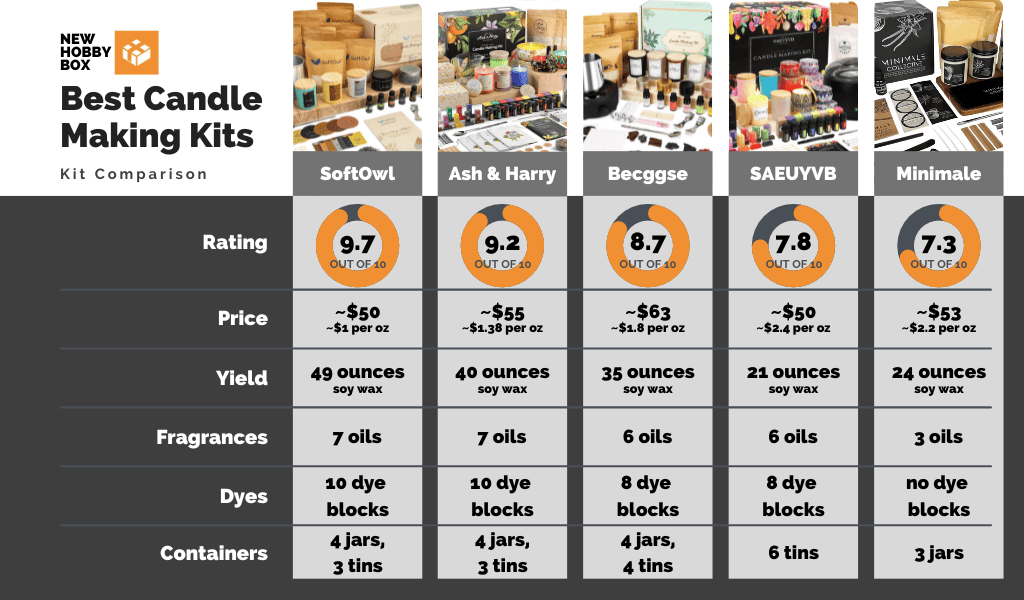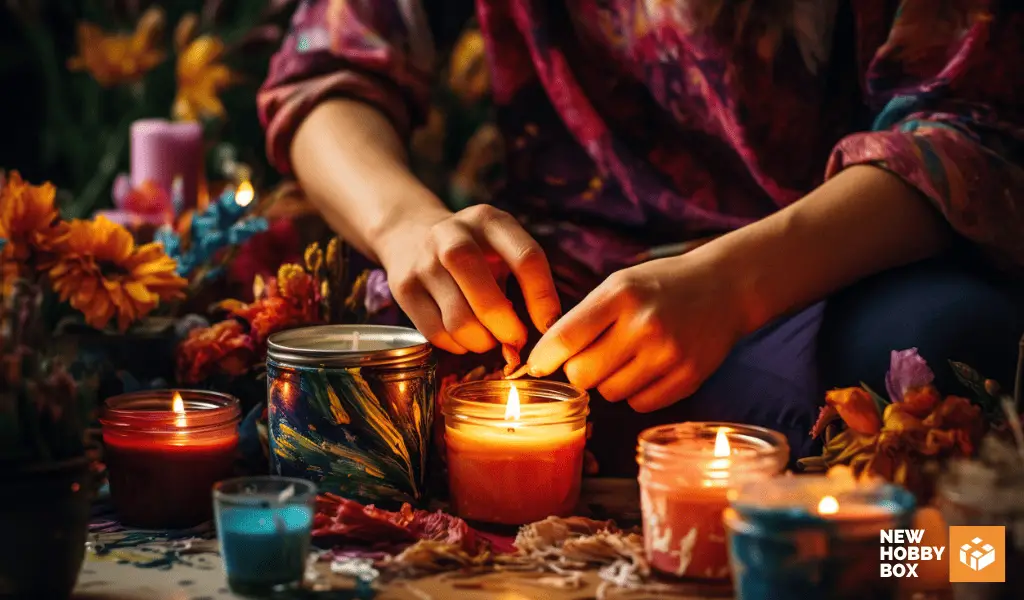
Ever been enchanted by the warm glow of a handcrafted candle and thought, “I could do this”? Yet, once you pull back the curtains you’re quickly overwhelmed with terms like ‘melting point’, ‘fragrance load,’ and “wick sizing”.
It’s time to demystify soy wax candle making once and for all, turning it from a complex science into a therapeutic hobby.
Mastering candle making has meant so much in our lives; it’s become a gateway to artistry and craftsmanship.
This article unveils the secrets to perfecting this craft specific to soy wax candle making, guiding you to create candles that tell stories through their flames.
Whether a beginner or a seasoned candle maker, this article promises to light your creative path. And perhaps the most crucial step to unraveling this mystery is pinpointing the perfect temperature for melting your soy wax.
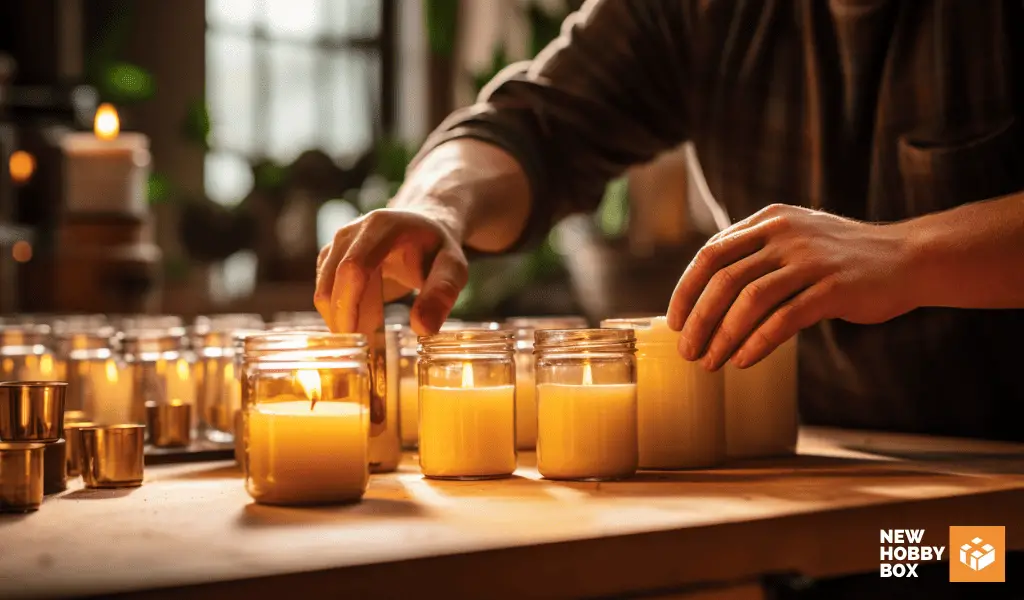
WHAT IS THE BEST TEMPERATURE TO MELT SOY WAX FOR CANDLES?
The ideal temperature to melt soy wax for candles is between 170°F and 180°F (77°C and 82°C). This range ensures a smooth, even melt. Use a thermometer to monitor the wax temperature with precision. Following the correct temperature guideline can potentially enhance the quality of candles.
But, as you might imagine, there’s quite a bit of variance to this based on the chemistry of the wax and the type of candle you’re trying to create.
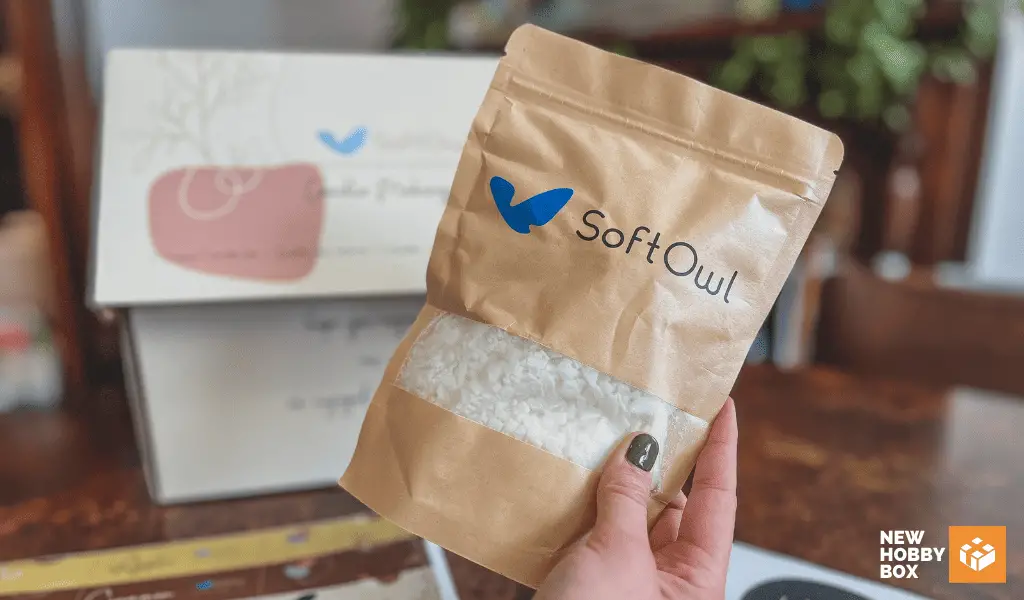
In fact, you most likely have blends of soy candles in your house right now; blends of soy wax with beeswax, palm wax, coconut wax, and unfortunately paraffin. If you’re not sure why paraffin wax is a bad idea be sure to skip over to our guide to the best waxes for homemade candles.
The point is that not every ‘soy wax’ bag of candle wax is 100% soy wax, and because of that, your wax may not melt between 170°F and 180°F.
Here are several live examples showing just how diverse the melting recommendations can be, ranging from 130-200°F:
- New Directions Aromatics: Recommends heating pure soy container wax to a temperature of 130-200°F to melt.
- Lone Star Candle Supply: Suggests heating Golden Brands 402 Soy Container Wax and Golden Brands 415 Soy Container Wax in a double-boiler system to 180-185°F, adding fragrance and dye, and stirring thoroughly. For Golden Brands 464 Enhanced Soy Container Wax, they recommend heating to 135°F (+/- 5°) 25.
- BrambleBerry: Notes that the pouring temperature depends on the wax and each blend/brand of soy wax may have its own properties and additives that affect the pouring temperature. The industry standard is to pour around 135°F, or just as the wax starts to look slightly opaque, but some wax can be poured as high as 160-175°F. Pouring temperatures also depend on the overall temperature of your workspace where your candles will cool, and on a cold day you may need to increase your pouring temp.
- Armatage Candle Company: Recommends not heating soy wax beyond 150°F if you’re making soy wax candles. However, they note that every component in the wax needs to be brought above the melt point to ensure an even crystalline structure. They suggest that the temperature for pouring soy wax candles should be somewhere between 185°F and 200°F.
Clear as mud, right? Not to worry, we’ll make it crystal clear in a second.

WHY THE PERFECT SOY WAX MELTING POINT MATTERS
When it comes to creating your perfect soy wax candles, understanding the role temperature plays is key. There are three temperatures that you need to monitor throughout, including the ideal melting point, pouring temp, and the right temperature to add fragrance.
It’s a delicate dance where you’ll try to heat the wax above its melt point to ensure an even crystalline structure for pouring, but not to overheat it to prevent fragrance notes from burning off.
Let’s explore why:
Unlock Your Next New Hobby
Subscribe to our newsletter for more inspiring ideas, tips, and tutorials!
1. Low Temps for Powerful Scents
We all love candles that fill our homes with pleasant scents, right? Well, temperature has a direct impact on the fragrance retention of your soy wax candles.
It’s all baked into the scent throw of your candle – which makes all the difference in how far away you can smell the candle throughout your house.
Melting your wax at high temperatures may seem tempting for faster results, but it has an inverse relationship with the strength of the candle’s scent.
In other words, the hotter the temperature you use for melting soy wax and adding fragrance, the weaker the scent will become. The high temperatures can cause your beloved fragrances to evaporate and leave you with weak-scented candles.
Instead, opt for melting your soy wax at the lowest temperatures possible while still creating a consistent melt of the wax. This preserves the integrity of the fragrance oils and ensures that your candles emit a vibrant scent.
WHAT TEMPERATURE TO ADD FRAGRANCE TO SOY WAX?
Add fragrance to soy wax at 185°F (85°C). At this temperature, the wax can fully bind with the fragrance oil, encouraging a more balanced and uniform scent throw. Stir the mixture thoroughly to allow for even distribution of the fragrance, adjust volume of fragrance proportional to wax.

2. Appearance Makes the Difference
Imagine spending hours crafting the perfect soy wax candle, only to end up with a visually uneven or discolored finished product. Tragic, isn’t it? In addition to scent throw, temperature also impacts the look and feel of your candle.
WAX IS TOO HOT
High temperatures during the melting process can create unsightly discolorations and result in an uneven, lumpy finish on your candles. After putting in so much effort, you want your candles to look flawless, don’t you?
At the other end of the thermometer, having too low of a temperature can negatively alter your candle’s appearance too.
WHAT HAPPENS IF YOU POUR SOY WAX TOO COLD?
Pouring soy wax too cold can cause issues like frosting and uneven texture. These imperfections occur because the wax doesn’t have enough time to bind properly – the wax molecules aren’t able to fully adhere. Correct pouring temperature mitigates wax binding issues.
GET THE ‘JUST RIGHT’ TEMPERATURE
You’re probably starting to see how temperature is the secret ingredient that can make or break a homemade candle.
This is where melting your soy wax at the ideal temperature comes into play – neither too hot or too cool.
By carefully melting your wax at the recommended temperature, you can achieve a smooth, glossy finish that looks as professional as store-bought candles.
This will give your candles that gift-giving quality and polish.
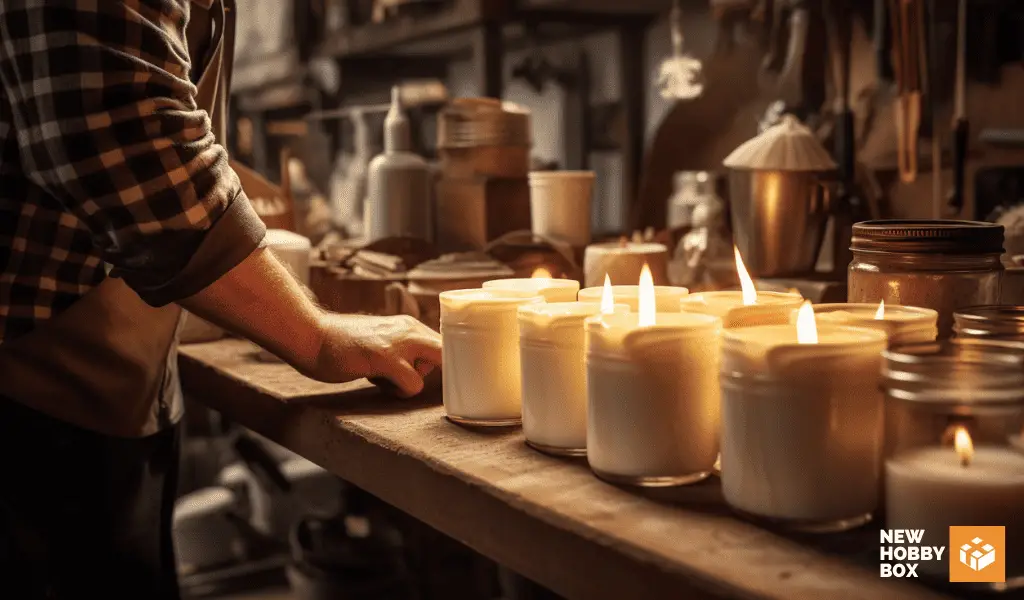
3 PERKS OF MELTING SOY WAX PERFECTLY
If you’re still not convinced about the importance of melting soy wax at the right temperature, let us enlighten you with a trio of benefits for melting and mixing soy wax the right way.
Perk 1: Candles Last Longer
Imagine a candle that burns slowly, gracefully, offering you many more evenings of warm, flickering light.
Achieving the right melting point increases a candle’s ability to keep on giving you more moments of light, night after night.
Perk 2: Fuller, More Enveloping Scents in Your Candles
Melting at the right temperature allows the wax to retain the fragrance oils more effectively.
It does this by preserving an optimal fragrance oil retention in the wax and scent compounds where each time you light the candle the balanced mixture is more effectively releasing the correct scent profile.
It makes all the difference between a candle that creates light and a candle that creates an immersive space of light and scent.
If you get this right, every time you light the candle, you’ll be stepping into an olfactory world that is deeper and more vibrant, truly changing the experience of a room by aroma.
Perk 3: Craft Professional Looking Candles
Homemade soy wax candles are perfect for gifting occasions; your friend’s eyes will light up as they admire how you created such a smooth and professional finish.
They’ll want to know how you created such a masterpiece – well, it’s all about melting your wax at the appropriate temperature.
It’s not just a candle at this point; it’s a testament to your craftsmanship and understanding the right melting temperature that removes lumps and bumps from your candle.
Your candles will leave your friends and impressed and you feeling a sense of satisfaction and accomplishment. It’s a win-win.
HOW TO DETERMINE THE RIGHT SOY WAX MELTING TEMPERATURES
Ready to dive into candle making but not sure where to start with melting soy wax? Here’s a simple 3-STEP guide to help you find that perfect temperature:
Step 1: Learn from the Experts
Start with some tips from people who know best (psst… we’re glad you started here.) We’ve created so many resources on creating amazing perfect candles at home, including how to find the best temperature ranges. Here’s the candlemaking highlight reel:
- Best Candle Making Kits: Top 5 Choices for 2023: Detailed review of the top 5 candle making kits for 2023, providing insights into the features, pros, and cons of each kit. This is our roundup of the best options and what type of candlemaker would like each kit the most.
- The Best Candle-Making Kit: Tested, Reviewed, and Approved: Incredibly robust review of our favorite candle making kit on the market – the SoftOwl Premium Soy Candle-Making Kit. Ideal for beginners to experts, it offers eco-friendly materials, a variety of scents, colors, and detailed design elements for a personalized touch. A perfect gift for DIY enthusiasts.
- How to Make Candles at Home: A Step-by-Step Guide: Discover the joy of candle making with New Hobby Box’s easy step-by-step guide. Gather essential supplies like soy wax, wicks, and fragrances to create your own scented candles at home. Perfect for beginners looking to light up their space or gift a handmade treasure.
- What Wax is Best for Handmade Candles? Your 7 Options: Choosing the best wax for handmade candles depends on your preferences and needs. Paraffin is affordable and versatile, but has health concerns. Soy is eco-friendly and burns slowly, yet might not hold strong scents well. Beeswax purifies the air and is hypoallergenic, but is pricier. Explore other options like coconut, palm, gel, and blended waxes to find your perfect match.
- 7 Reasons to Make Your Own Candles: Save money, choose your favorite scents and colors, and create the perfect gift. It’s not just a hobby, it’s a therapeutic journey into crafting your ambiance. Dive in now and find more than 7 reasons to love candlemaking.
Outside of New Hobby Box, we all have at least one candlemaker as a friend or influencer. Don’t hesitate to ask them for advice. It’s like getting a recipe from a friend; they’ve figured out the perfect “ingredients” for you.
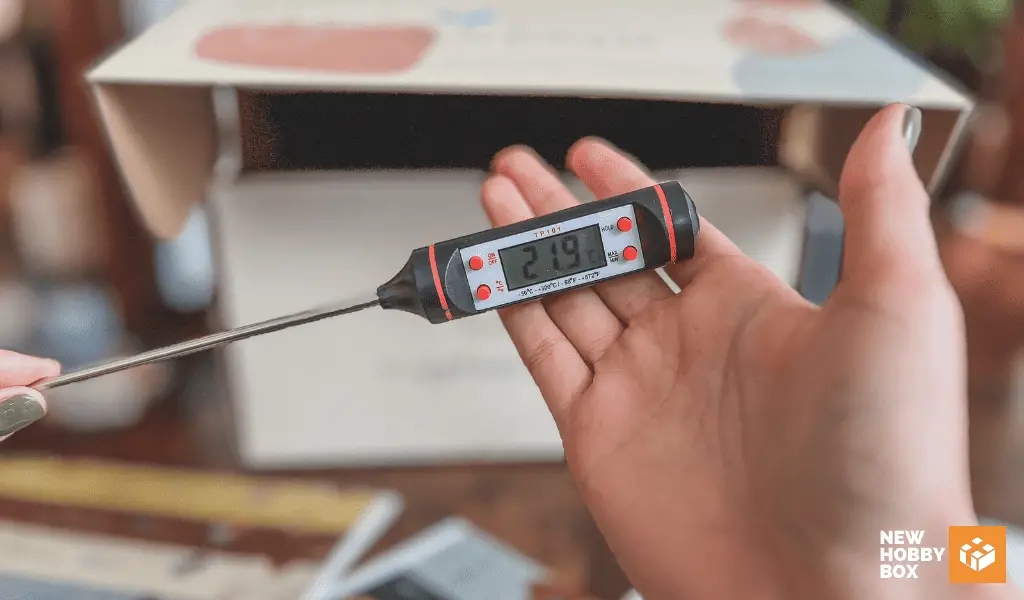
Step 2: Get a Good Thermometer
Next, make sure you have a good thermometer. It will be your handy helper in making sure your wax is just the right temperature.
Think of it as your candle-making buddy, helping you get everything just right. Even a basic digital thermometer (pictured above) will pass the test for giving you an accurate read. But if you want to go to the next level, invest in an infrared thermometer.
Discover Your Next Favorite Hobby
Join our newsletter and get the latest tips, tutorials, and inspiration to kickstart your new hobby journey.
WHAT IS THE MOST ACCURATE THERMOMETER FOR CANDLE MAKING?
The most accurate thermometer for candle making is a digital infrared thermometer. These devices offer precise readings, facilitating the meticulous temperature management necessary in candle making. They are favored for their accuracy and ease of use in monitoring the wax’s temperature.
We’re big on infrared thermometers because you can keep your distance from the hot wax and still get an accurate read, avoid having to clean the thermometer after each use, and because it can be used for so many different things around the house.
Sure, they’re a little on the expensive side, but if you get a quality infrared digital thermometer, you’ll never need to get another one again.
Step 3: Follow the Wax Instructions
Lastly, always check the instructions on your soy wax package. Different waxes melt a bit differently, and following the guidelines will help you get the best results. It’s a simple step that makes a big difference in your candle-making adventure.
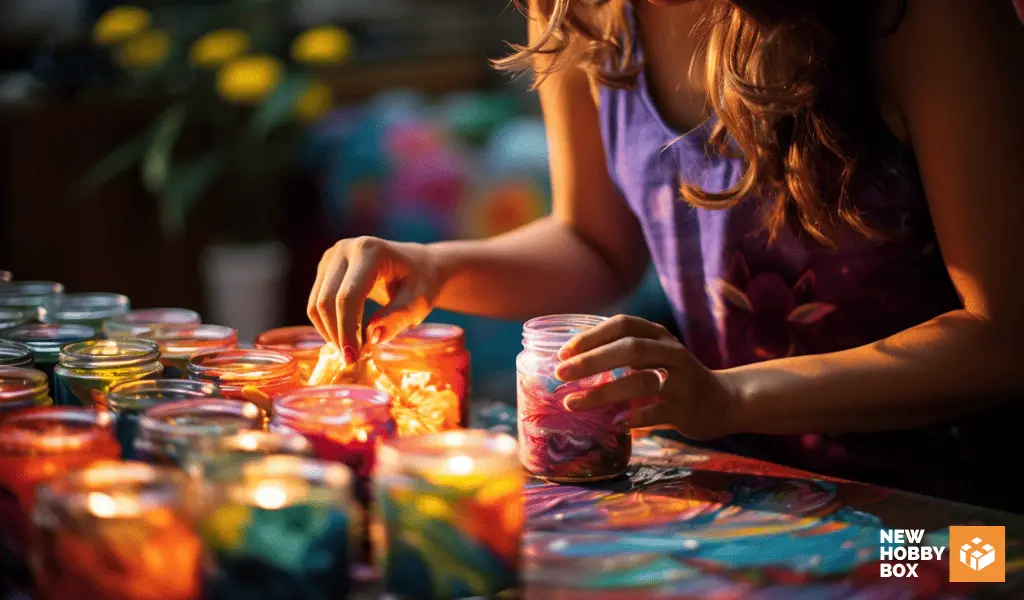
TEMP MATTERS IN CANDLE MAKING
Look at you… you now know the deepest secret for candlemaking success.
The key to making the most wonderful soy wax candles is getting that melting temperature just right. When you do, you’ll have candles that last longer, smell richer, and look absolutely beautiful.
Feel free to play around and find the temperature that works best for you.
Remember, every little step you take brings you closer to making candles that not only light up a room but fill it with joy and warmth.
So here’s to happy melting and even happier candle making.

